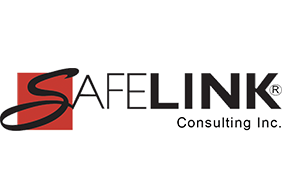How many times are workers provided personal protective Equipment (PPE) just to find that it doesn’t fit? This could make the worker decide not to wear it since the employer didn’t consider people are of different sizes, shapes, heights, and structures. The Occupational Safety and Health Administration is very clear in its Standard at 29 CFR 1910.132 that the employer must provide PPE that is safely designed, fits the employees, and is appropriate for protection from the hazard.
The safest step for an employer to take is to assess the hazards that require the use of PPE and then develop a program that addresses the hazards, These hazards could be biological, chemical, or physical. For purposes of this discussion, biological hazards will be addressed.
Biological hazards are a part of infection control and are addressed in OSHA’s Bloodborne Pathogen Standard 29 CFR 1910.1030. Section (d)(3) of this standard covers PPE. It states that an employer shall provide it at no cost to the employee and it must be appropriate for the hazard. It can include gloves, gowns, laboratory coats, face shields or masks and eye protection, and mouthpieces, resuscitation bags, pocket masks, or other ventilation devices. OSHA considers it appropriate for this type of hazard if it “does not permit blood or other potentially infectious materials to pass through to or reach the employee’s work clothes, street clothes, undergarments, skin, eyes, mouth, or other mucous membranes under normal conditions of use and for the duration of time which the protective equipment will be used.”
In this Standard OSHA also requires the employer to ensure that the PPE is provided in appropriate sizes and is readily accessible at the worksite. This PPE could include:
>> Hand protection could include hypoallergenic gloves, glove liners, powderless gloves, or other similar alternatives.
>> Whenever contamination can be reasonably anticipated through splash, spray, spatter, or droplets of blood or other potentially infectious materials, OSHA requires the employer to provide PPE such as masks, eye protection, and face shields. All of these are available in varying sizes and types, therefore, the employer must determine the PPE to provide that will protect the eye, nose, or mouth from contamination.
>> Protective clothing is also required to be worn in occupational exposure situations, therefore, the employer must provide the PPE such as gowns, aprons, lab coats, clinic jackets, or similar outer garments that will protect the worker in occupational exposure situations.
>> OSHA also states in the Bloodborne Pathogen Standard that surgical caps or hoods and/or shoe covers or boots shall be worn when gross contamination can reasonably be anticipated. During the COVID-19 pandemic, most of the dental team started wearing caps and have continued that protection.
OSHA doesn’t stop with just requiring the employer to provide the PPE. Employees must be trained on how to donn and doff the PPE, how to dispose of it, and when to replace it. This means that training must be conducted to ensure that the PPE fits the employee and the employee understands how to wear the PPE. It doesn’t end there however for an employer. The employer must monitor the effectiveness and use of the PPE so improvements can be made as necessary.
In summary, don’t create a greater hazard by providing PPE that doesn’t fit. Purchase all sizes of PPE to ensure that employees are appropriately protected as set out in OSHA’s Standards. Remember if a temporary worker is a part of your workforce, you must provide that temporary worker PPE so anticipate this need and keep all sizes and types of PPE on hand. Reach out to SafeLink Consulting for support.
Discover more about proper removal of PPE for infection control.
Learn more about how SafeLink Consulting can support your business with compliance services, including safety compliance to meet OSHA training requirements and quality system consulting to achieve FDA compliance. SafeLink Consulting provides businesses with workplace safety training, infection control training, online HIPAA training, quality systems, assessments, audits, due diligence, and more. Industries served:
Dentistry compliance - assisting the dental practice with meeting requirements for OSHA, HIPAA, EPA, and CDC guidelines, patient safety and employee health & safety - learn more about Dental OSHA Compliance
Dental Laboratory compliance - assisting the dental lab with meeting requirements for OSHA, FDA, and CDC guidelines, employee health & safety, plus FDA requirements for lab manufacturing custom implant abutment /gmp for medical device manufacturers
Medical Device Manufacturers compliance - assisting with meeting OSHA compliance & FDA requirements, GMP - good manufacturing practices
General Industry compliance - assisting with OSHA compliance and FDA compliance as it pertains to the specific business
Beverage Industry compliance - assisting beverage businesses such as the craft brewery, winery, cidery, distillery, vintner with meeting OSHA compliance, health & safety, FDA requirements / GMP - Good Manufacturing Practices.







Leave Comment